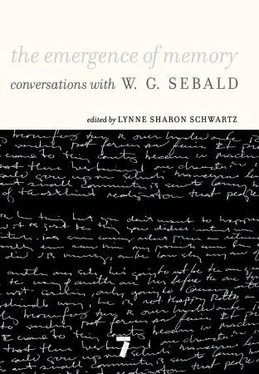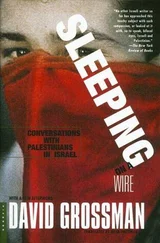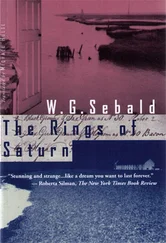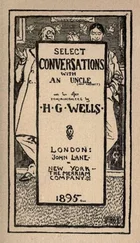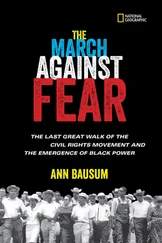Scrutinizing documents — photographs, diaries, war records — launched Sebald into a receptive state. (In The Emigrants, he wrote that looking at photographs, we feel “as if the dead were coming back, or as if we were on the point of joining them.”) He chose the objects of his attention intuitively. Unlike a professional historian, who goes into a library with a research plan, he foraged impulsively, then moved on. “I can’t afford to sit in the Munich War Archive for two years,” he told me. “So I have to rush in and sit there for a week or two and collect things like someone who knows he has to leave before too long. You gather things up like a person who leaves a burning house, which means very randomly.” He accumulated postcards from junk shops, maps from archives, passages from memoirs. He tore photos from magazines or snapped them himself with a little Canon. He used these images as a research tool or an inspirational device, but he then chose to incorporate them into his books. “It’s one way of making obvious that you don’t begin with a white page,” he said. “You do have sources, you do have materials. If you create something that seems as if it proceeded seamlessly from your pen, then you hide the material sources of your work.”
Insidiously, the photographs also make the text appear to be not fictional but real, despite the widespread knowledge that even in the predigital age, photographs could be manipulated. In The Emigrants a character remarks that a photograph published in the Nazi press that showed a book burning in Würzburg in 1933 was fraudulent. Because the bonfire raged at night, the cameras failed to record it; so a plume of smoke and a nocturnal sky were added to a daytime shot of another gathering. The narrator says that he was skeptical of this report until he unearthed the photograph himself and observed the obvious falsification. And at this point in the text, Sebald includes the image. “I had that picture,” he explained. “I thought very consciously that this is a place to make a declaration. It couldn’t be more explicit. It acts as a paradigm for the whole enterprise. The process of making a photographic image, which purports to be the real thing and isn’t anything like, has transformed our self-perception, our perception of each other, our notion of what is beautiful, our notion of what will last and what won’t.” For Sebald, there could be no better touchstone for the importance and difficulty of getting to the truth than a doctored document of the Nazi destruction of the written word.
At the time of his death, Sebald was researching a book that would explore, among other subjects, his family history. “As they all came from the lower classes, there are often not even exact dates of birth or places of residence,” he told me. “This uncertainty begins two generations back.” His ancestors inhabited a forested region between Bavaria and Bohemia that had, from the time of the seventeenth century, been devoted to glassworks, and so Sebald could speculate with reasonable confidence about their working life. But even of that he was never quite certain. Like an archeologist reconstructing a pot from a couple of shards, he worked in a way that he characterized as “extremely tenuous and unreliable.” In The Rings of Saturn , he compared writers to weavers: melancholics working complex patterns, always fearful that they have gotten hold of the wrong thread. One of the threads he was tracing in his next book concerned a commander of the Red Army in the short-lived Bavarian Socialist Republic.
Executed in Munich in 1919, on a spot that is now a Hermès store on posh Maximilianstrasse, this man had the same name as Sebald’s mother’s family. While Sebald had not established a family connection, what was at the least a coincidence had caught his attention.
At other stages of his research, a surfeit of unreliable documentation would cloud the picture further. For the same book, he was reading through twenty-three volumes of diaries (each consisting of two hundred pages, written in a minuscule hand, in ink made from elderberry fruit) that had been kept from 1905 into the 1950s by the grandfather of a friend of his, a Frenchwoman his age named Marie, who grew up in Picardy. This diarist grandfather, a miller, “was obviously the family scribe and the family rememberer, and yet he wasn’t always accurate,” Sebald said. “He took notes and he didn’t always write them down at once, but in the evenings or on Sundays, because he was working.” Relatives offered variant versions of the same events. “So there are all these different narratives, and they have equal rights and equal status,” Sebald said. And in some places, of course, there are simply gaps. “You can say once or twice that the evidence is scarce, but you can’t do that on every page — it becomes a bore. So you borrow things. You adulterate the truth as you try to write it. There isn’t that pretense that you try to arrive at the literal truth. And the only consolation when you confess to this flaw is that you are seeking to arrive at the highest truth.”
Marie’s family in France had endured an intimately unhappy relationship with the Germans. Her grandfather’s village was located near St. Quentin, right on the German defensive trench line in the last year of World War I. During World War II, her father joined the Resistance and was murdered by the Nazis. “He was shot at the age of twenty-two or twenty-three and had his eyes gouged out,” Sebald said. Marie was born a few months later. Sebald showed me a photograph snapped by a Catholic priest of the austere stone building where the execution took place. “I think there is something there that you wouldn’t get hold of without the photograph,” he said. “Not necessarily to be put in the book, but for the working process. Certain things emerge from the images if you look at them long enough.”
He showed me a topographical map from 1918 used by the German army command: “This gives you an idea of the density of the trench system, the irrationality of it. . The completely insane collective effort that marks this event — I don’t think I shall be able to understand it, but I want to marvel at it.” Whenever he visited Munich, Sebald would spend half a day at the War Archive, calling up volumes that no one had touched in decades. He recalled the first time that the files that he had ordered arrived on a trolley. “You have a visual sense of how much something weighs,” he said. “You try to pick this up, and you can barely lift it. It’s as if the specific weight of the paper they used is higher than the paper we use. Or it’s as if the dust has gotten in there and insinuated itself, so they have become like a rock. If you have any imagination, you can’t help but wonder about it. These are questions a historian is not permitted to ask, because they are of a metaphysical nature. And if one thing interests me, it is metaphysics.” He paused for a second. “I am not seeking an answer,” he said. “I just want to say, ‘This is very odd, indeed.’”
Much of modern life repelled Sebald. He told me that one of the chief reasons he departed Germany, first for French-speaking Switzerland, then for England, was that he “found it agreeable not to hear current German spoken all around me.” His literary models wrote in nineteenth-century German — Gottfried Keller, Adalbert Stifter, Heinrich von Kleist, Jean Paul Richter. “The contemporary language is usually hideous, but in German it’s especially nauseating,” he said. He asked me if I knew the German word for “mobile phone.” With a look of horror, he told me: a handi .
He owned neither a fax machine nor a telephone answering machine. He was the only faculty member at the University of East Anglia without a computer in his office: he had declined the one allotted him, recommending that the money be used instead for student aid. (“Was it?” I asked. He shrugged. “Of course not.”) Amused by human foibles, his own very much included, he knew that there was something comical about his reactionary posture. “I hold with the wireless and the motor-car,” he proclaimed. “I don’t especially appreciate the blessings of technology.” Passively but stubbornly, he fought off the tawdry intrusions of the modern world. “There’s always an argument that is hard to resist,” he observed. “So your daughter says, ‘What if I get stranded in the middle of Thetford Forest in my not very reliable car — shouldn’t I have a mobile phone?’ The devil comes in with a carte de visite . That is always the way.”
Читать дальше
